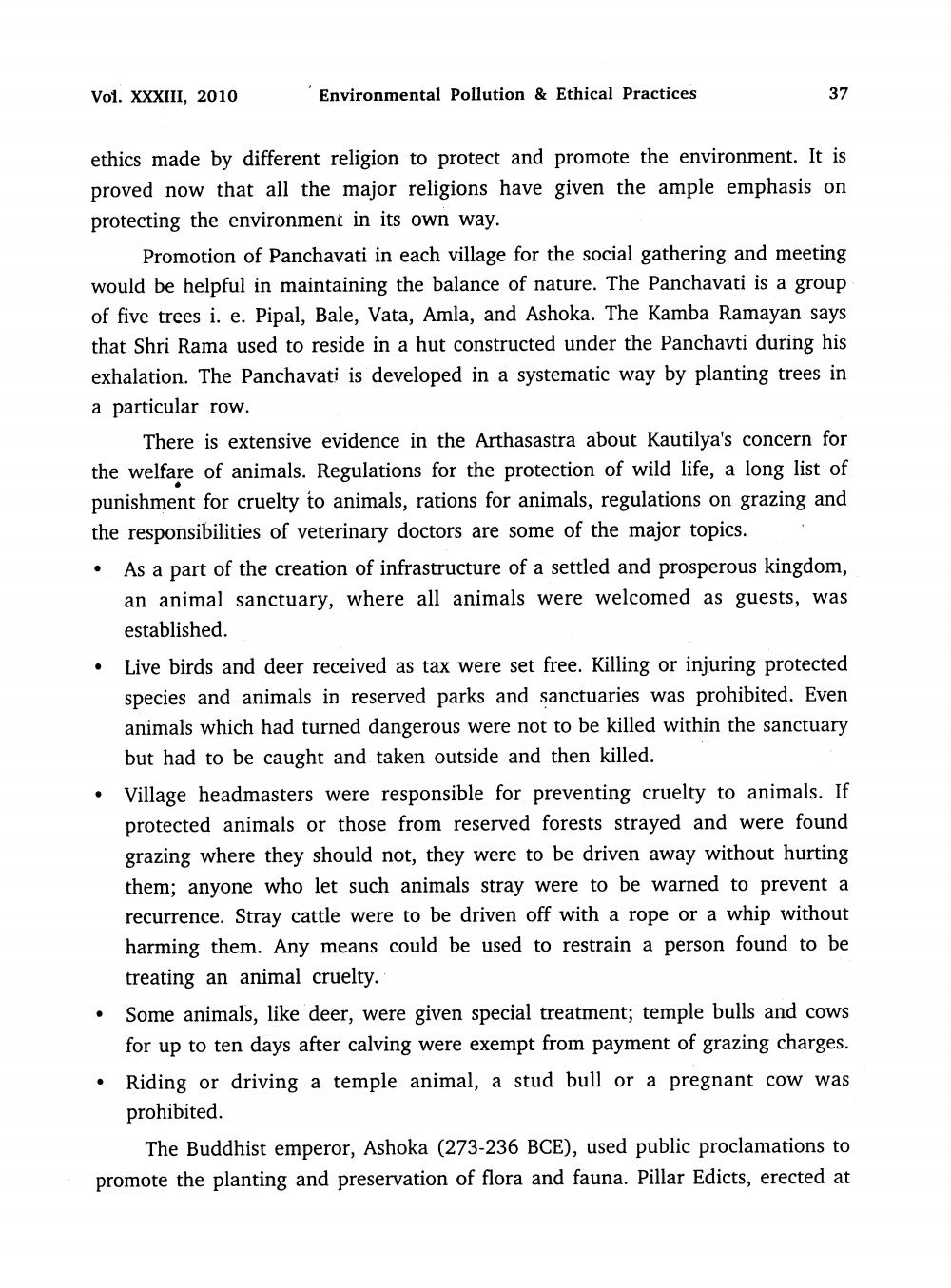________________
Vol. XXXIII, 2010
.
Environmental Pollution & Ethical Practices
E
ethics made by different religion to protect and promote the environment. It is proved now that all the major religions have given the ample emphasis on protecting the environment in its own way.
Promotion of Panchavati in each village for the social gathering and meeting would be helpful in maintaining the balance of nature. The Panchavati is a group of five trees i. e. Pipal, Bale, Vata, Amla, and Ashoka. The Kamba Ramayan says that Shri Rama used to reside in a hut constructed under the Panchavti during his exhalation. The Panchavati is developed in a systematic way by planting trees in a particular row.
There is extensive evidence in the Arthasastra about Kautilya's concern for the welfare of animals. Regulations for the protection of wild life, a long list of punishment for cruelty to animals, rations for animals, regulations on grazing and the responsibilities of veterinary doctors are some of the major topics. • As a part of the creation of infrastructure of a settled and prosperous kingdom,
an animal sanctuary, where all animals were welcomed as guests, was established. Live birds and deer received as tax were set free. Killing or injuring protected species and animals in reserved parks and sanctuaries was prohibited. Even animals which had turned dangerous were not to be killed within the sanctuary but had to be caught and taken outside and then killed. Village headmasters were responsible for preventing cruelty to animals. If protected animals or those from reserved forests strayed and were found grazing where they should not, they were to be driven away without hurting them; anyone who let such animals stray were to be warned to prevent a recurrence. Stray cattle were to be driven off with a rope or a whip without harming them. Any means could be used to restrain a person found to be treating an animal cruelty. Some animals, like deer, were given special treatment; temple bulls and cows for up to ten days after calving were exempt from payment of grazing charges. Riding or driving a temple animal, a stud bull or a pregnant cow was prohibited.
The Buddhist emperor, Ashoka (273-236 BCE), used public proclamations to promote the planting and preservation of flora and fauna. Pillar Edicts, erected at




